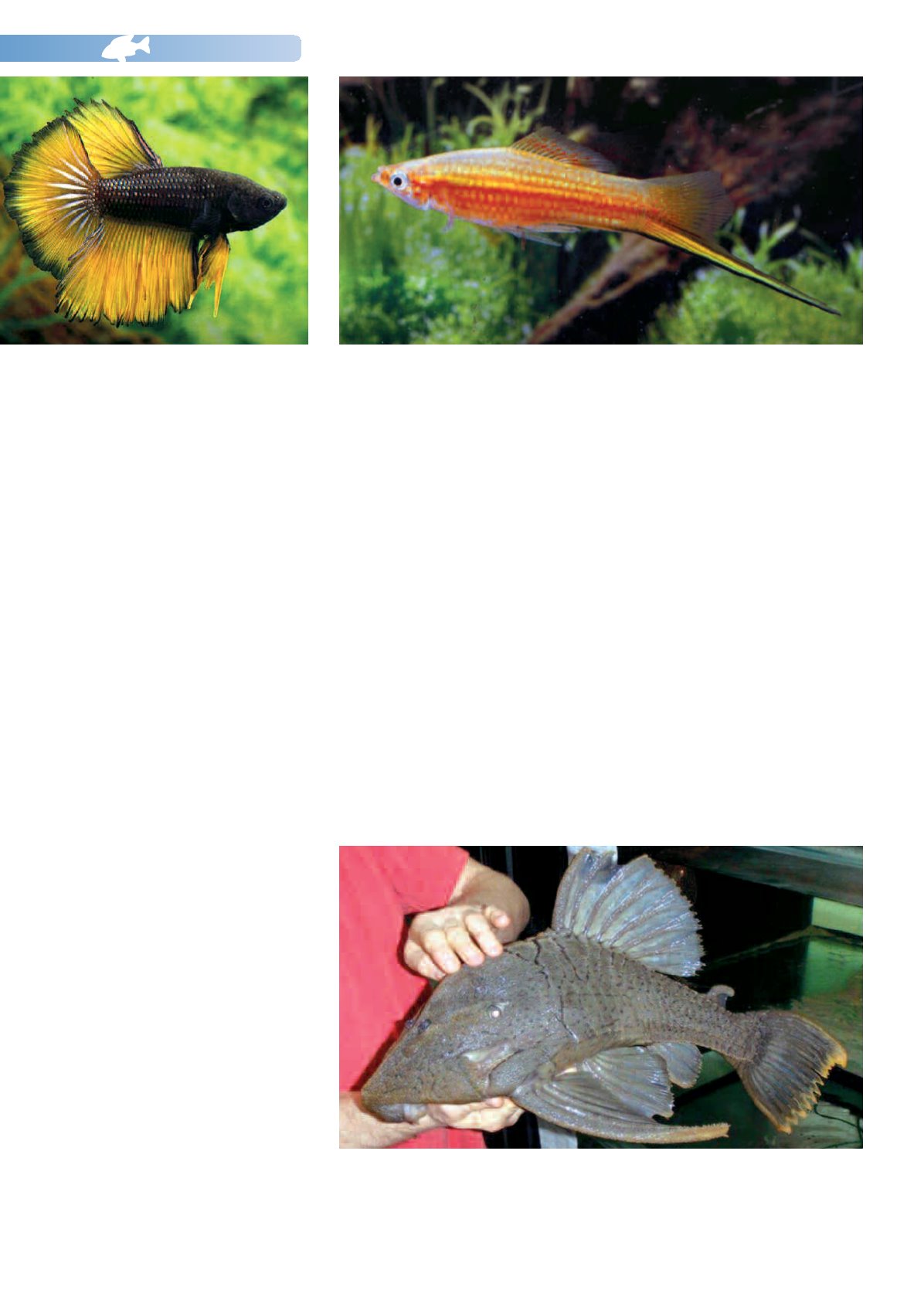
NEWS 110
26
Xiphophorus hellerii
Yucatan
In 1975,during a vacation trip to the federal state of Quintana Roo inMexico,Berlin aquarist Günter
Daul caught and brought back a number of swordtails. Subsequently this strain received the
confusing name
Xiphophorus hellerii
”Yucatan”. The federal state of Yucatan lies to the west of
Quintana Roo.Thismeans that the fishes should correctly be named
Xiphophorushellerii
”Quintana
Roo”; but the form has by now so often been labeled
Xiphophorus hellerii
”Yucatan”in books that
changing the name would make no sense. For the history of this fish seeWagenknecht, U. (2012)
Der Yucatan-Schwertträger. Viviparos 1/2012 26-29 (online at http //
aquarienfische.de/media/files/Wagenknecht%20(2012)%20Der%20Yucatan-Schwerttraeger.pdf).
It is particularly interesting that this local populationhas bynowsurvivedamongenthusiasts for 38
years. The genetics of color inheritance in this many-colored (polychromatic) form is likewise
interesting.Specifically there are females with yellowbellies which,when pairedwithmales with a
lot of in their coloration,breed true to produce red-belliedmales and yellow-bellied females,while
white-bellied femalesmatedwith blue-greenmales likewise breed true and produce offspring the
color of the parents.
However,fans of wild forms of live-bearing toothcarps usually breed them inmixed shoals so that
the genetic diversity of these fishes is retained in future aquarium generations.
This variant is sometimes available at AquariumGlaser in the formof German-bred stocks.
Betta splendens
Mustard Gas
Tastes differ. But there is no question that
the name "Mustard Gas" (one of the most
repugnant substances in chemical
warfare) for this gorgeous fish is a gross
error of taste. A breeder named Jude Als in
the USA supposedly originally developed
this fish, although it then looked quite
different - a blue or green body with
yellow fins. These bettas supposedly bred
true.
Nowadays the bettas traded under the
name "Mustard Gas" are bred mainly in
Asia and are black with orange or yellow
fins and dark fin edgings, and called
Melano Butterfly Bettas by the breeders.
The breeding of the attractive black
(Melano) fightingfish is difficult enough in
itself as the females are sterile; this means
that females of other colors have to be
used and the recessive gene then brought
out by back-crossing the "normal" colored
females (which, however, carry the Melano
gene) to a Melano male, or else siblings
can be bred together to produce a
percentage of fishes with the desired
color combination. In addition a very
good understanding of genetics and
breeding skill are required. The
combination of black body, yellow fins,
and black fin edgings is even rarer than
black fishes and so there are only ever a
few specimens of
Betta splendens
Mustard
Gas available.
Ornamental fishes aren't always small. Recently we received this hefty fellow, a
Panaque
sp.
"L191".The fish took the transfer from Colombia to the fish rooms at Aquarium Glaser very well
and has now settled in nicely.


